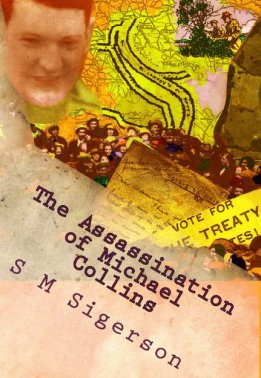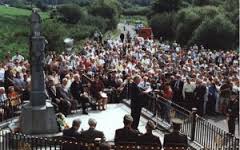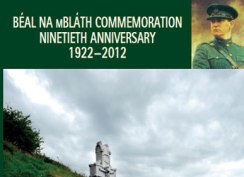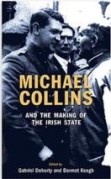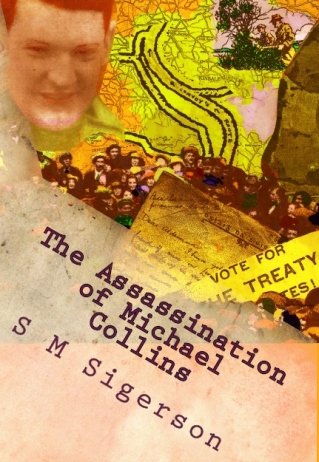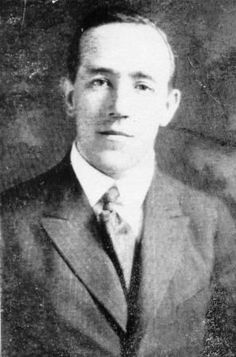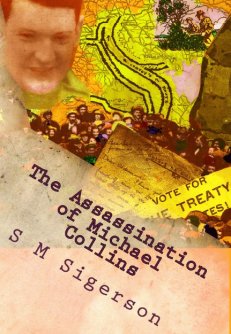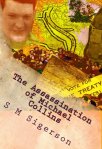Private Jock McPeak was the machine-gun operator in the armored car; which followed immediately behind Commander-in-Chief Michael Collins’ touring car, during the fatal ambush at Béal na mBláth. A British soldier himself right up until the Truce, he has been the subject of considerable speculation, for his central position at the much-disputed Vickers machine gun; as well as for extraordinary turncoat adventures and criminal convictions, in the wake of Collins’ death. Following excerpts from the book “The Assassination of Michael Collins: What Happened at Béal na mBláth?” offer a nutshell of McPeak’s enigmatic story:
As the gunner who operated the Vickers machine gun in the turret of the armoured car, McPeak, his conduct, and the performance of that gun, are most central to events at Béal na mBláth. Upon close scrutiny, his actions and words cast conspicuous doubt upon his veracity and character; including the key question of whether McPeak’s gun worked fine, or malfunctioned.
McPeak was one of those most directly responsible for the protection of the C-in-C’s invaluable life, and physically nearest to him at the moment of his suspicious death. He was reportedly the object of acute suspicion among fellow Free State soldiers; suspicion which seemed justified soon after by his desertion and theft of the armoured car.
In view of all the mysterious factors connected with him, hardly any other conclusion would be reasonable but that, if Collins met his fate through the agency of traitors in his own bodyguard, then McPeak was either involved, or had some knowledge of what happened. If so, his account published in 1971 might be expected to contain inaccuracies, calculated to conceal something he knew. (That is, he would be one who may have lied, had more reason to lie than others, etc.)
There are a number of wild rumours about McPeak, ostensibly coming from former Free State soldiers. These include reports that he was accused, interrogated, beaten, and charged with Michael Collins’ murder (but that charges were dropped for lack of evidence.) Others said that, in his cups, McPeak boasted that he had killed Collins. Another witness claims that McPeak admitted the C-in-C fell “accidentally” to “friendly fire”.
The truth is the strangest tale of all: three months after the ambush, the Irish Civil War still raging, McPeak deserted the Free State Army, and joined the anti-Treaty side. In doing so, he just happened to drive away, not with just any armoured car, but that one in particular, which took such an important part in the ambush where Collins died.
A number of plausible explanations were offered for this extraordinary theft of army property. But none of them are nearly so likely, as that his absconding with that great hulking piece of evidence had to do with that single most important event connected with it, and with him: the C-in-C’s untimely demise.
Could an examination of the armoured car and its machine gun turret have cast doubt on someone’s version of what happened?
Read more
“The Assassination of Michael Collins:
What Happened At Béal na mBláth?”
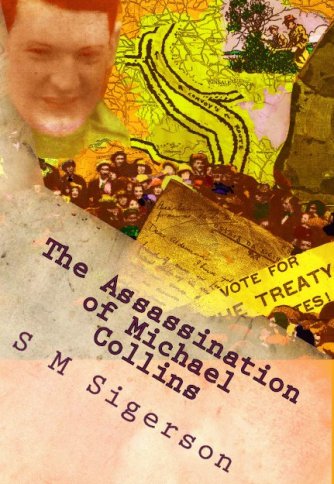
by S M Sigerson
Paperback or Kindle edition here:
www.amazon.com/dp/1493784714
All other e-reader formats:
www.smashwords.com/books/view/433954
Read reviews:
http://www.rabidreaders.com/2014/12/03/assassination-michael-collins-s-m-sigerson-2/
Or ask at your local book shop


